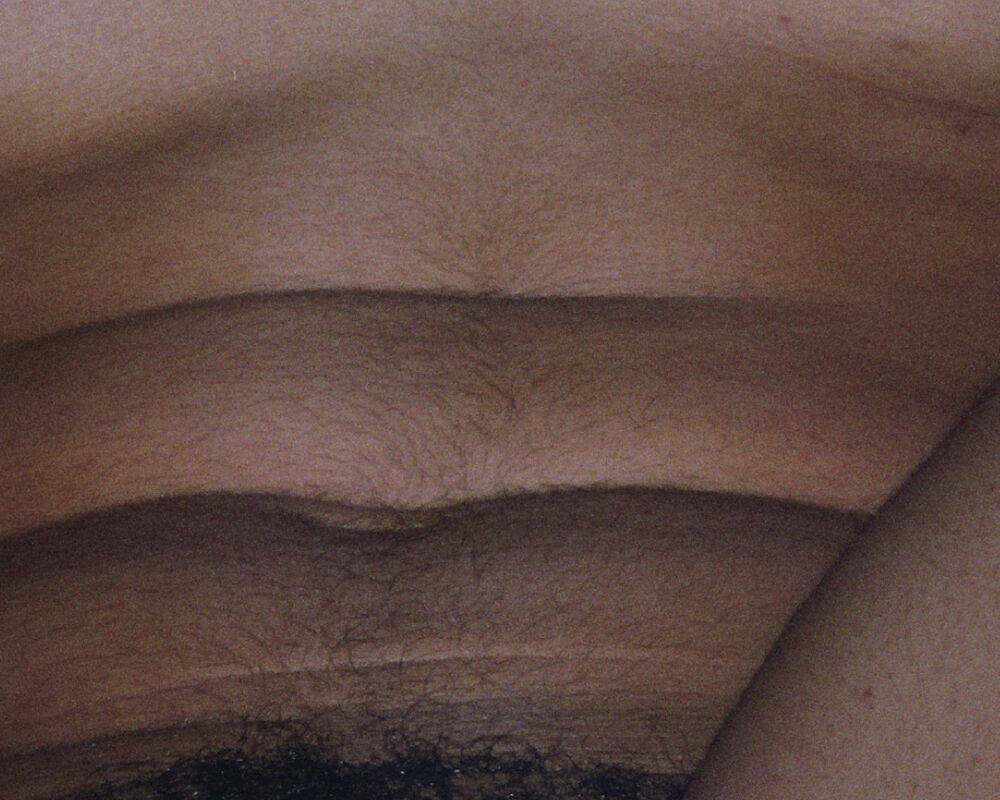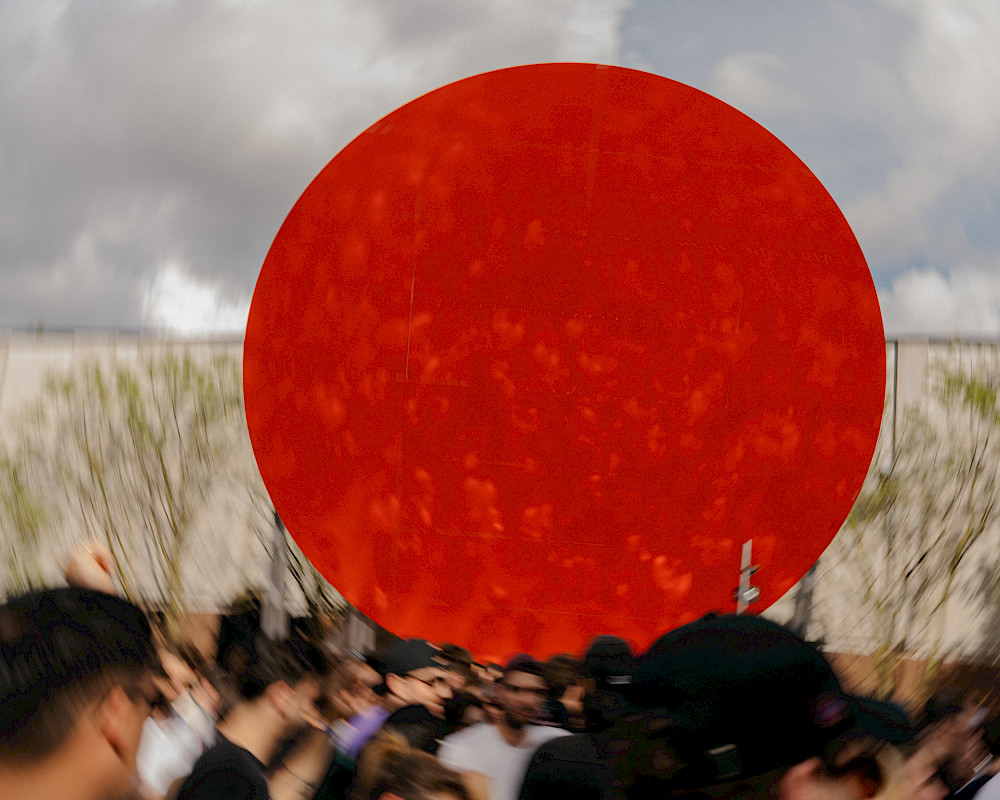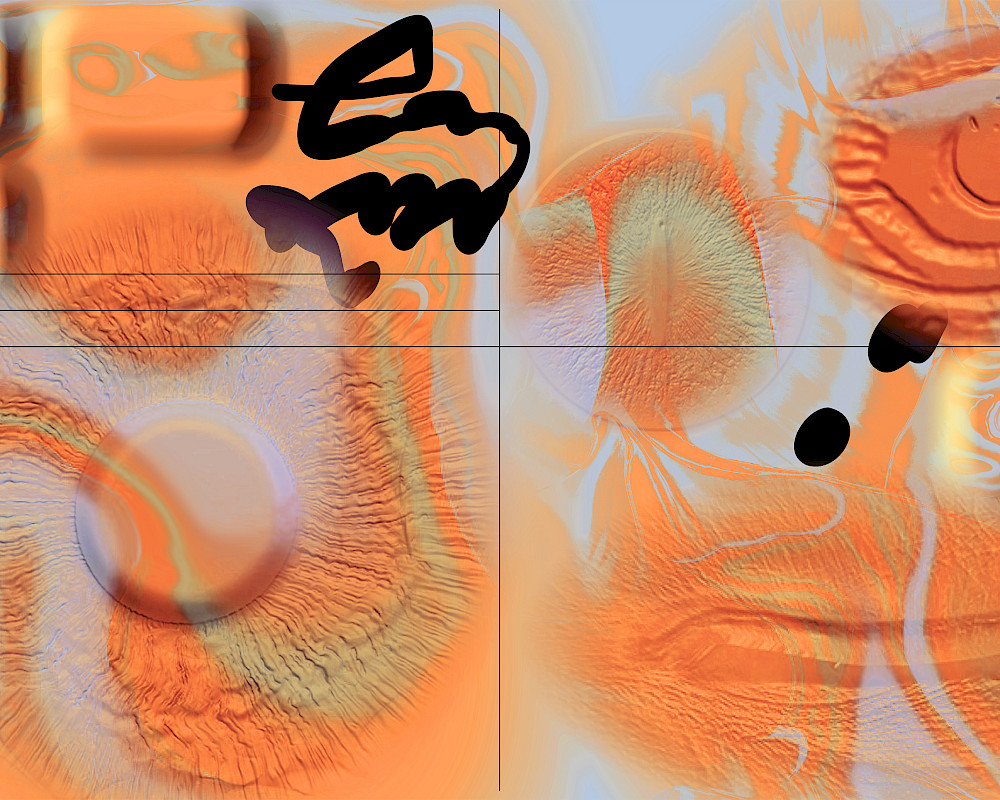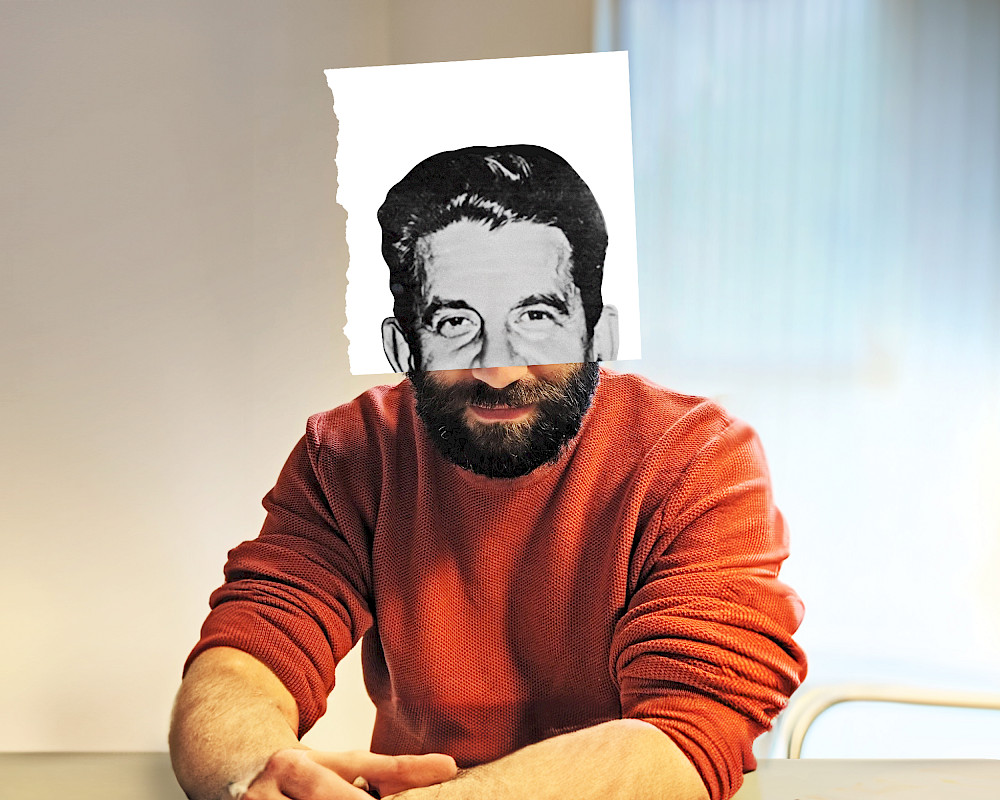interview
Introducing Future Artefacts FM
Berber Meindertsma
Berber Meindertsma has been with Het HEM since its founding in 2019. Alongside her responsibilities as development manager, she has curated and cultivated public and community programmes for Het HEM. She continues to develop her own research interests by writing on topics concerning hosting, hospitality and resonance in art.
mind
Check-in with... Stéphanie Janaina
Berber Meindertsma speaks with dancer and choreographer Stéphanie Janaina, almost four years after she performed ¡miércoles! at Het HEM.
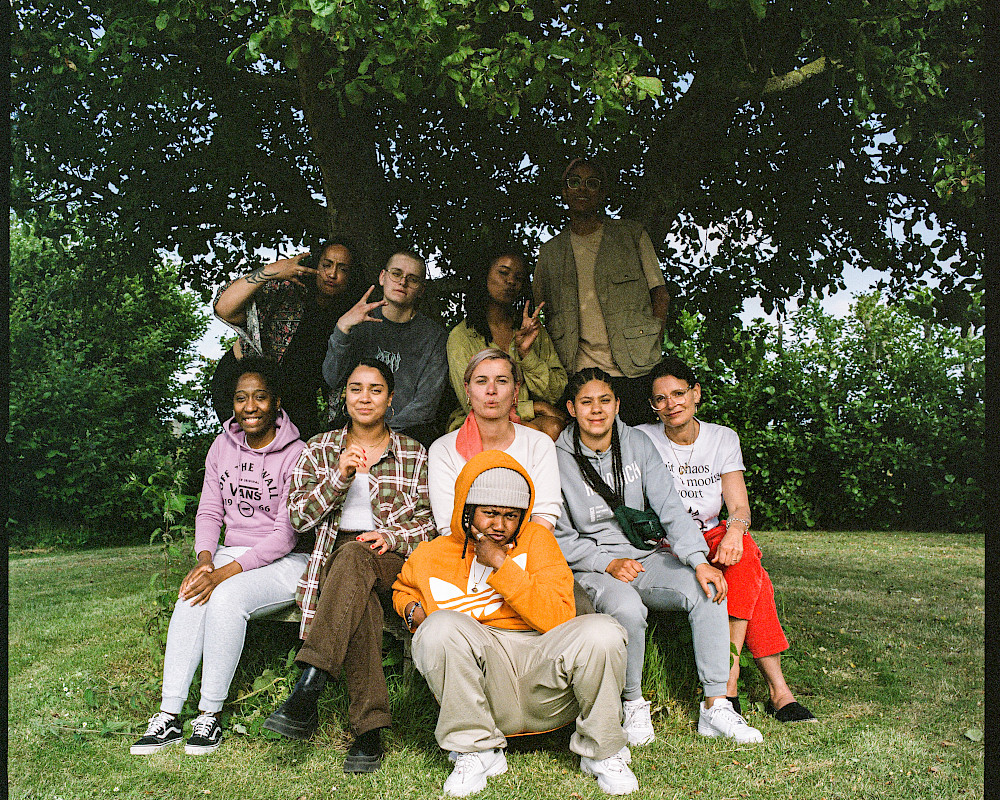
mind
Check-in with… HMTP talents and coaches
After the music video release Vamos by KG and Fabs, a track written during the Homebase Music Talent Programme (HMTP) Writer’s Camp, Berber Meindertsma speaks with them and two of the coaches of the camp.
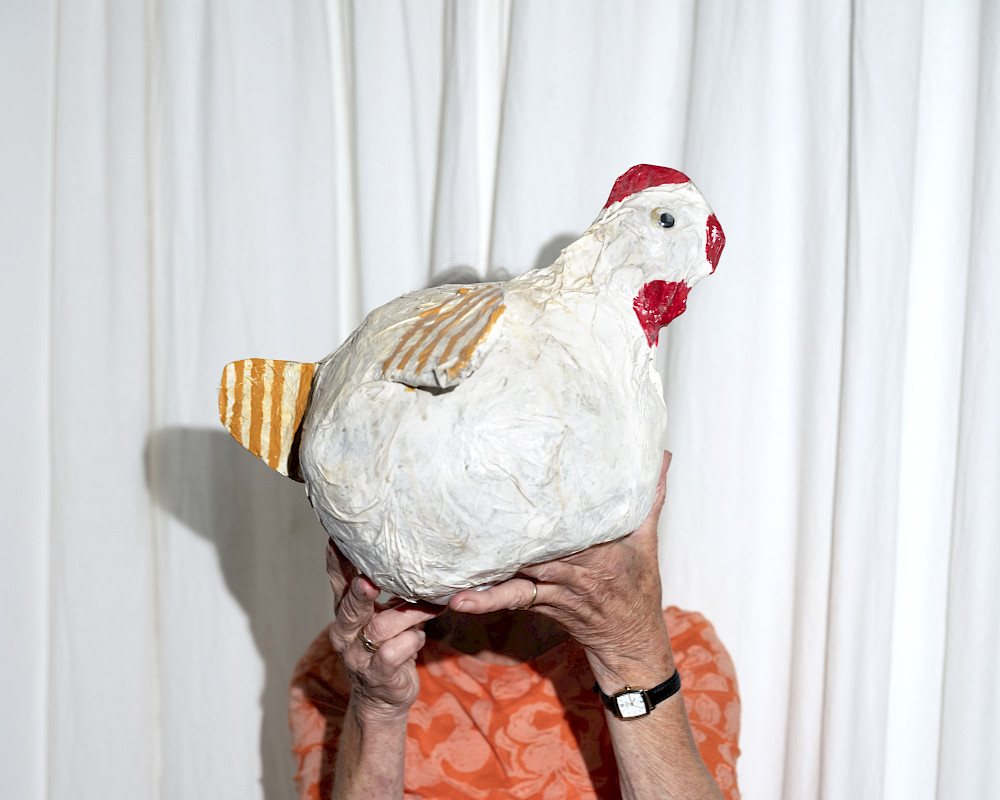
interview
Check-in with... Wil Spier
“If people are interested, they understand everything in the world. The problem is getting them interested.”
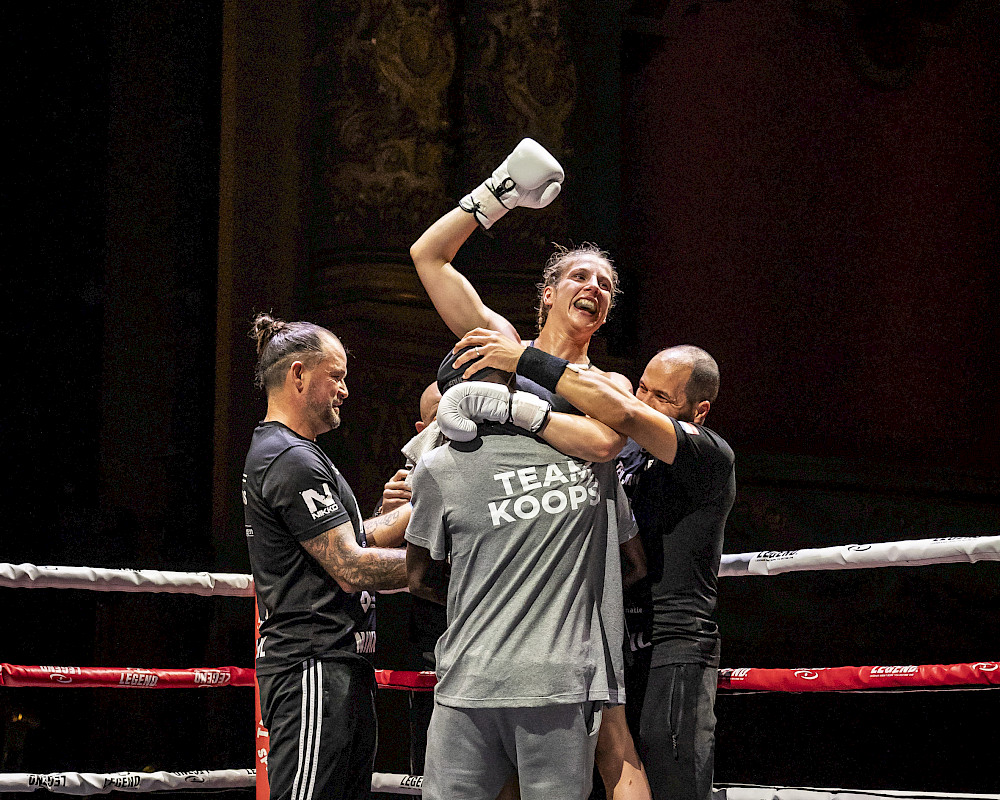
interview
Check-in with... Sara Koops
Ever wondered what boxing is all about, and what art might have to do with it? Sit back and enjoy this check-in with professional boxer Sara Koops, who participated in the Chapter 1NE Box clinic at Het HEM in 2019.
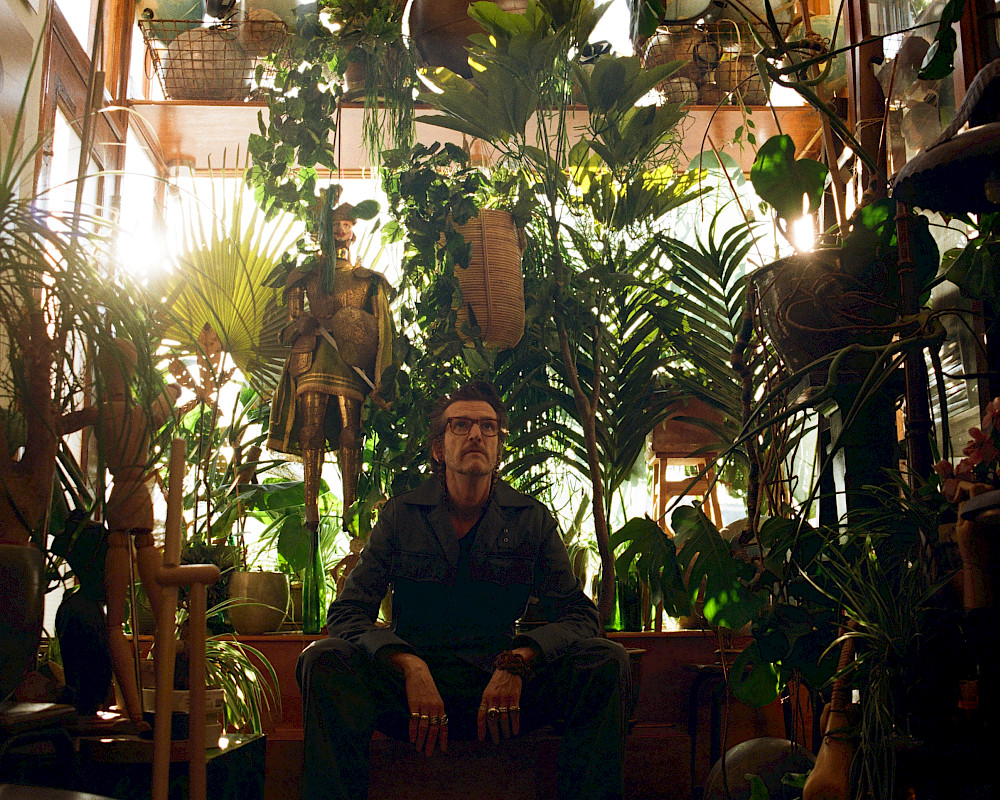
mind
Check-in with... Maarten Spruyt
We sat down and looked back with Guest of Chapter 3HREE Maarten Spruyt, known for his work as a curator, art director and stylist, with an incredible knack for beauty and sensory perception. "I try to make exhibitions which make you look inwards, feel uncomfortable and sit with that for a moment."
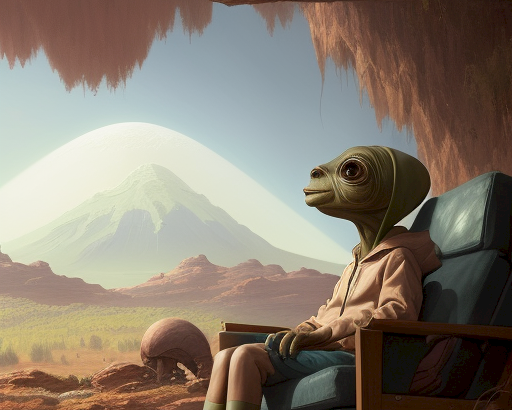
essay
Hospitality on demand
Can the concept of hospitality provide us with a critical lens to explore what kind of relationships socially engaged art institutions can build online ?
16
min read

One of The Couch’s main aims is to support artist’s projects and experiments. From September 2023 to February 2024, The Couch is hosting 4 episodes of the London-based radio show Future Artefacts FM, as part of the Mystics of the Chthulucene research programme. Listen to the first episode here.
Future Artefacts FM, initiated and hosted by artists Nina Davies and Niamh Schmidtke, is an unusual radio show with an unusual story behind it. The show starts with an announcement of a fictional event about a collection of broadcasts that was discovered. It then introduces an artist artist whose work was discovered in the cache, an artist whose practice plays with fiction through radio plays, interviews, sound artworks and podcasts. Each episode feels a bit like going on a studio visit – some of the works you hear are still unfinished, and you get to listen to artists totally nerding out on the research behind their work, bringing in broader contexts of society and popular science.
A motif in the story behind Future Artefacts FM is COVID-19 – it’s one of these artist projects borne out of the pandemic that started small but then just kept growing. To set you up with the full story as we publish the first episode on 24 September, Berber Meindertsma had a call with Nina and Niamh about how it all started and how they would like to see Future Artefacts develop. They also asked Berber questions on why we chose them and about the future of podcasts in the art world.
”Who would ever listen to a 15 minute audio piece in an empty space?”
Berber Meindertsma: Hi Niamh and Nina, we are excited to host you for a couple of months here on The Couch. We wanted to take this opportunity to introduce you and Future Artefacts FM properly to our audience. I’d like to go back to the beginning and ask you: how did you two meet and how did you come up with the idea to start the radio show about fictional art pieces?
Nina Davies: Niamh and I met in 2019 when we started our MFA at Goldsmiths University of the Arts in London. We knew each other then, but became much closer when COVID-19 happened. When we heard that we wouldn’t receive feedback on our academic essays for at least six months, Niamh, I and two other students started an online reading group for almost a year. We were quite upset when we heard we weren’t getting any feedback because we put a lot of effort into our writing, and so we started to exchange essays. That’s when Niamh and I became very familiar with each other’s work.
At the same time, Goldsmiths offered us some online writing workshops, which Niamh and I both attended. One of the exercises was to write about your work using fiction. Niamh was already using fiction in her work, but for me this was something entirely new. Without access to our studios because of COVID-19 restrictions, writing became much more interesting and important. It became a tool to make work. Once I started using fiction, I really liked what it did and decided that I should use it in my work, rather than only using it for my artist statement. That’s how ‘Beyond the Virus: Past, Present and Future of Zombie Communities with Jamie Lewis’ was born actually – a fictional podcast which imagines a post-pandemic world in which pockets of communities might communicate through non-verbal languages. So yes, in those online encounters and bonding, that was where the seed for a longer collaboration and discussion on fictional works and future worlds was planted.
Niamh Schmidtke: Yes, pre-pandemic, we mostly bonded over the amazement that we were accepted to the MFA. During the pandemic we discovered that we have a lot of research interests in common and that we were interested in self-organised projects. We were both passionate about making the episodes as good as they could be – for our skill set at the time. It really clicked between us, and remains a collaboration we’ve since realised is really fruitful for our work, and our friendship.
BM: I find it so interesting how, despite the loss and negative impact such as (financial) insecurity COVID-19 has caused, for some artists the pandemic has also been a fruitful time to start new projects and collaborations. It created a moment to dive deeper into the process and research behind the work. But how then did you make this step from a crit club to an online radio show?
ND: In 2021 we applied to an open call at Radio Thamesmead (RTM), a radio station in South London, run by the artist space TACO! In South London. RTM had been on my radar, as I had a few friends do one-off broadcasts through them. But only until encountering the RTM open call, radio hadn’t crossed my mind yet as a space or way to experience art. At the time of the open call, I had already made the fictional podcast episode ‘Beyond the Virus’ – which in a way was the result of the writing workshops during COVID-19. I was wondering if I should turn that into a video work, but the other artists of my MFA said that I should just keep it as it is. I agreed with them, but I started thinking about how I could take the next step with it and present it to an audience - traditional art spaces didn’t seem a right fit for it. Who would ever listen to a 15 minute audio piece in an empty space?
The RTM open call for a talk show came at the right time to investigate and experiment with this. It was a 3-month residency to develop a one-hour talk show, with no requirements other than that there should be music in the background. I then asked Niamh if she would be interested in applying together. We had continued our conversations about our work, and I knew that she had been working on a radio play.
NS: Yes I hadn’t finished ‘Walkie-Talkie to the Waves’ yet, but I was making my graduation show around a radio play. It was the first year in which graduation shows were happening again, but a lot of them were precarious: either confirmed or changed in location last-minute. A radio play seemed to be the safest format in this volatile scenario, ensuring that whatever happened, the work could still exist in its truest form.
“Radio is a super public space. As artists you can self-release stuff on your website, but how do you build and engage an audience? Radio seemed to be the best home for it.”
ND: We both already worked a lot with audio, but started thinking, where does audio work live? The residency provided us with a great opportunity to dive deeper into this question. Radio is a super public space. As artists you can self-release stuff on your website, but how do you build and engage an audience? Radio seemed to be the best home for it. During an hourlong talk, you can actually engage an audience with your work and create a space to discuss it. Especially for works containing fiction and the kind of world-making speculations about the future that our works did. Conversation became a tool to break it down.

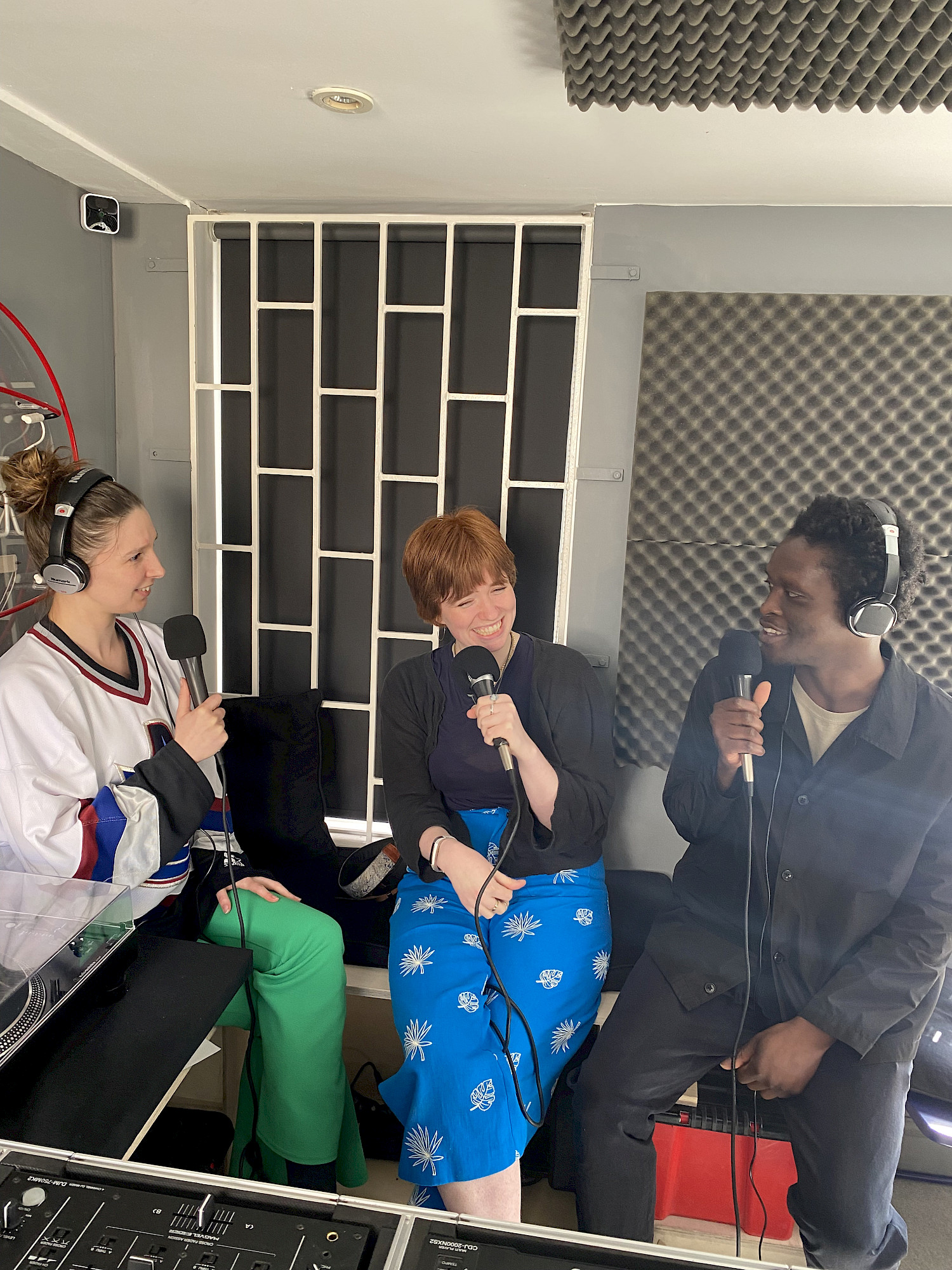
But as a radio show, we also had to upgrade our game. We came up with a concept that departed from our own work and questions about the world we live in; speculations about the future, such as how the generation of young people growing up during COVID-19 are affected by it; and how writing about the future impacts our relationships to the present. The first two works, our own, are directly about that. We then invited the artist Rebeca Romero, who does spoken-word performances in which she deals with fiction. We also had to build up a team, as we didn’t have any technical knowledge, so we got artist Joe Moss and John Trevaskis on board.
NS: Yes, in the beginning we also did recordings at the Goldsmiths studio. It was very DIY and learning on the go, with a home-made soundproof studio in a small, overheated tool storage space on the ground floor of one of the Goldsmiths’ buildings.
BM: Ha, that’s amazing! What has been a source of inspiration for you to start Future Artefacts as a podcast platforming fictional works?
NS: I was obsessed with the New Yorker fiction podcast for a long time. Each episode, they read and analyse a short story. I don’t know anything about literature, but through this podcast I got to understand the tools of fiction; for example, how they are making plots work in certain ways and how narratives interact with each other. That got me thinking; wouldn’t it be really nice if we can do something like this for the radio show Nina and I had in mind? As something for the artists, to both learn something new about their work as we are analysing it, and as an opportunity to share the research behind the piece, which is not always something you get to do. In some ways this has been one of the most rewarding parts of making the show, because the commission fee is limited as we are still a very small and young organisation, but at least we can help them artistically and creatively with thinking through their work. The New Yorker podcast has also been an important reference point to think about how we could engage people outside of the art world in something art-related. Could we try the approach of openly discussing a work, bringing in other texts or books, connecting it with other world events or makers and thinkers? Literally discussing the tools behind the audio work. The best compliment we received about the show was from someone who said that they could hear the artists thinking.
ND: For me it was the Orson Welles’s pioneering 1938 radio play War of the Worlds, which I listened to on a road trip across Canada with family. This play famously caused a moment of mass hysteria because people who tuned in too late to hear the introduction thought that it was actually a news broadcast about the end of the world; that it was actually happening or aliens were coming to invade. I love that that wasn't what was intended to happen. It was almost like a trompe l’oeil radio play – structuring the play as a broadcast. That for me personally had an influence of the kind of radio show story I wanted to make for Future Artefacts.
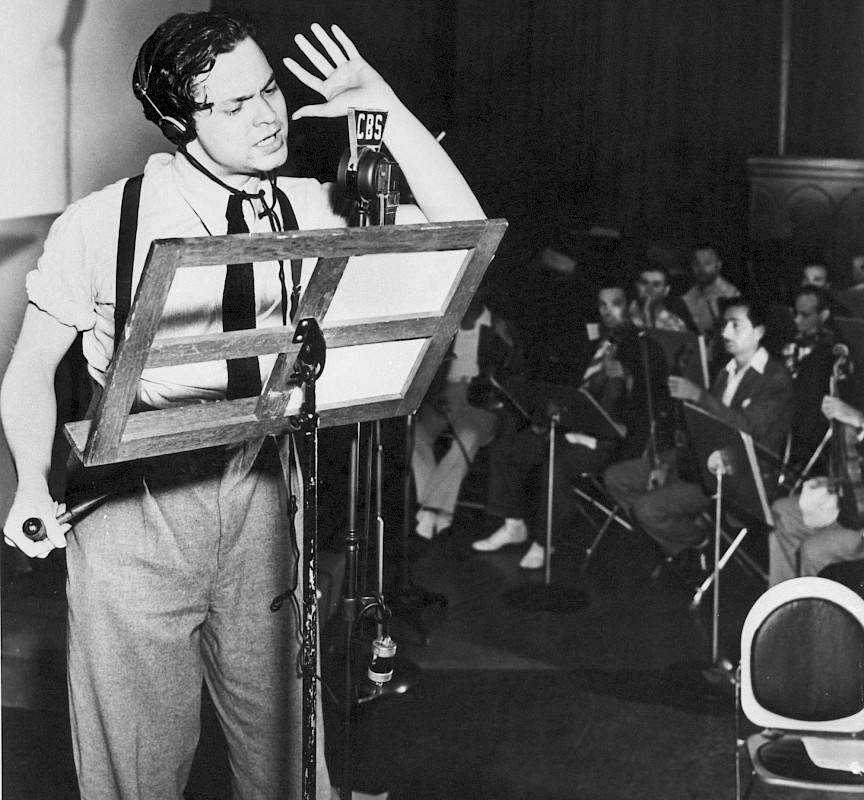
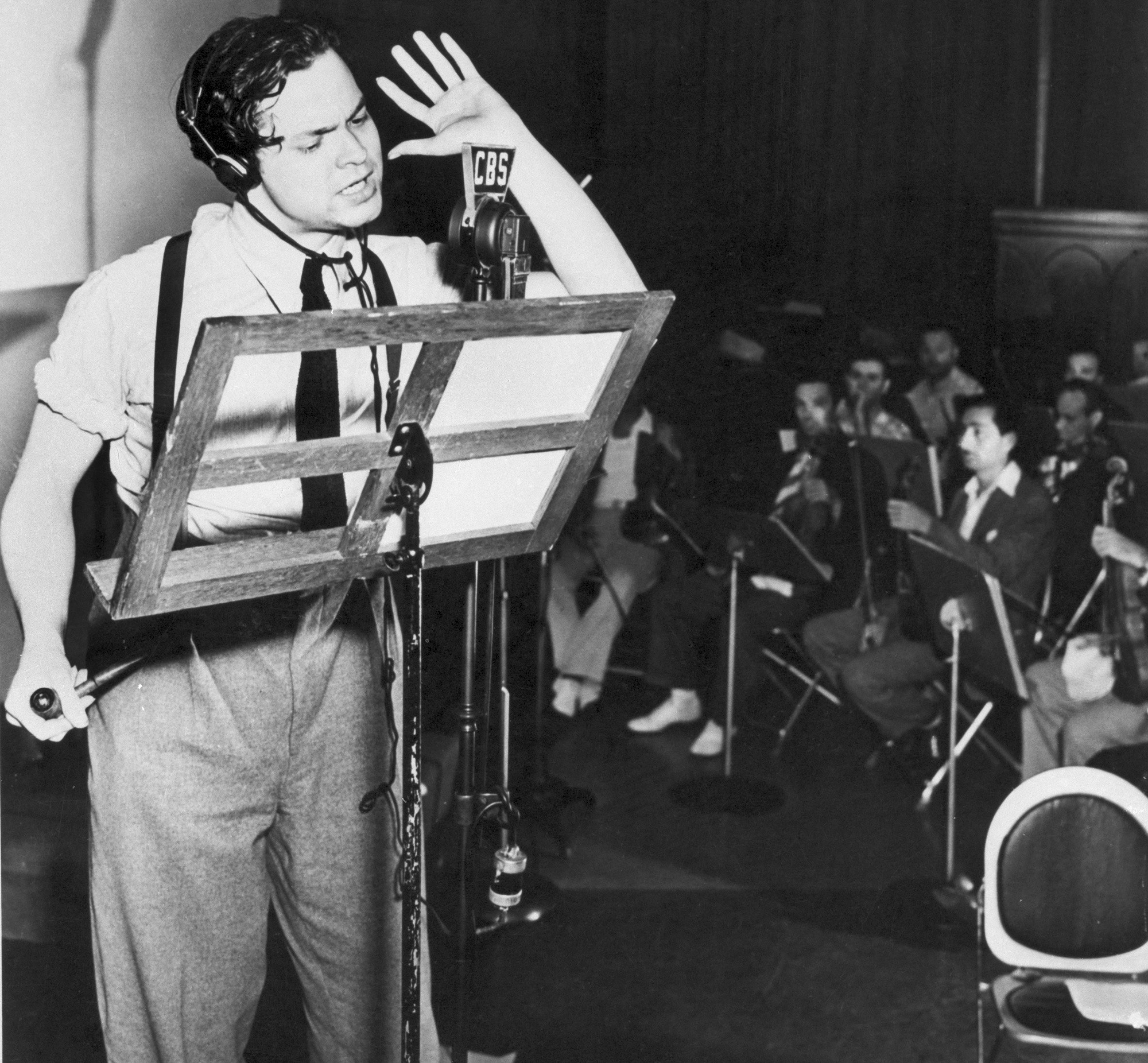
BM: The show follows a structured format with the fictional intro story, and then listening to an audio work followed by a 40-minute discussion. How have you decided on this structure?
NS: The clear structure allows us to have a relaxed conversation once we are recording. Good preparation also helps with that. We did a lot of research on radio plays and podcasts; how we could best prepare ourselves but also our guests. For us it is important to make our guests feel as comfortable as possible, and to create the best conditions for them to present themselves and their work in the way they want to. That’s why we for example always send our guests the questions beforehand, and have a conversation a week before the actual recording. We also make transcriptions of each radio show, which we share on our website.
“Each episode, each radio show, we treat as a showcase or mini-exhibition of an artist’s work. Our website is the place, the platform, where we gather all these showcases.”
ND: Yes, and we also do a lot of research into the artist’s work ourselves, to ensure that we can steer the conversation and ask the right questions in case our guests fall a bit quiet when we’re recording – some artists struggle a bit getting their story out knowing that “we’re recording”. In that sense, we try to approach our job as journalists. I think I even looked up things like “how to be a good journalist” into YouTube before we began. We had full research days to dive into the guests’ practice.
BM: How would you like to see Future Artefacts develop? Do you see a bright future for it?
ND: I would like to build a more sustainable role for the show in both the worlds of art as well as radio. I’d like to see how our programming could fit under the bigger umbrella of art institutions; like a mini programme under a bigger arts programme. Or a mini-series with a radio company. Making it part of something else will be a huge help with financing the show, which now heavily relies on public funding and our own voluntary hours.
“Accessibility is an area where we want to grow. How do we make accessible transcriptions of audio works? How can accessibility look like for different groups of people?”
NS: Accessibility has been important from the start, and is another area where we want to grow. We present purely audible artworks, which in their nature are accessible to someone who is visually impaired. The music in the background is intended to be helpful for people with ADHD to concentrate on the conversation. Current questions we are thinking about are: how do we make accessible transcriptions of audio works? How can accessibility look like for different groups of people? As well, many of the artists in our show are female, queer and international – we consciously focus on finding a wide roster of artists to participate in our show. We’re also thinking more broadly about the future of podcasts. Podcasting is becoming more popular in the art world: Serpentine, Barbican and Catalyst Arts all have dedicated podcasting programmes. Do you think this is a trend within the artworld, or a fad that will die out?
BM: Good question! I think that podcasts are here to stay. But I also think that podcast is maybe not the right word for it, at least not for what you do. There are a lot of different podcasts and everyone can make them. This creates a wide variety of podcasts: there are short and “fast” ones which are a bit like YouTube clips, telling you how to do things, and then there are the kinds which are more like long form audio works – a word you have used – which are meant to be archived and listened to years later. Some podcasts are just used for promotion, whilst others have artistic or cultural value, being made with special sound or music techniques.
I see great potential for podcasts for the art world, as they enable the listener to unravel the different layers behind an artwork or artistic practice. Just like you said before Niamh, about how the New Yorker fiction podcast showed you the tools of fiction, I think that podcasts in the artworld can do something similar. Podcasts engage an audience in a different way; you can listen to them from your own personal space, which brings the work closer to you personally. I think the episodes of your show are best experienced when you actually create a moment for them: on the couch with a coffee or nice glass of wine. You need concentration, just like you would need that when you look at a work of art.
NS: We also try to create a space for audio-based works with our radio show. It’s kind of half journalism and half presentation space for works that are meant to be broadcasted. Each episode, each radio show, we treat as a showcase or mini-exhibition of an artist’s work. Our website is the place, the platform, where we gather all these showcases.
BM: Yes exactly! Some podcasts are run or made by artists, and I do think that those tend to come out more like artworks in themselves, part of their practice, whilst others are more used like communication or promotion material. The podcasts, or radio shows by artists, are too valuable and beautiful to be a fad!
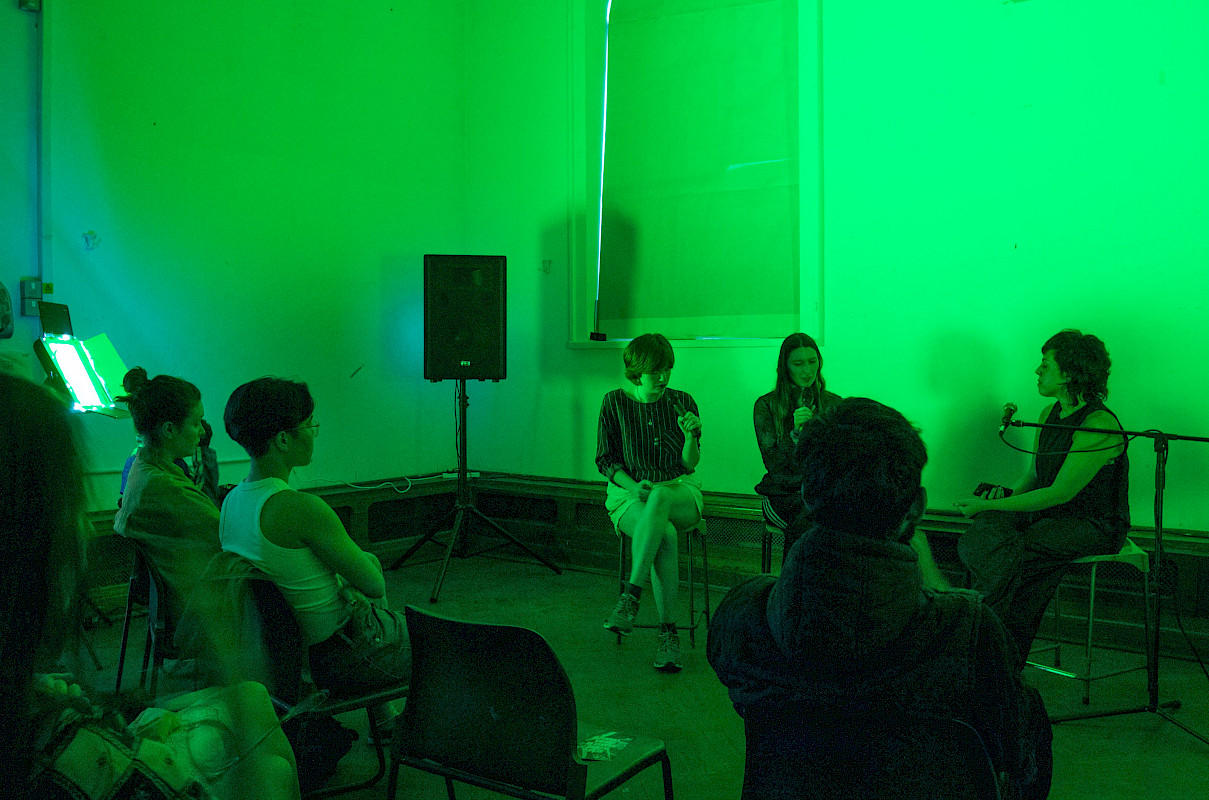

BM: This also brings me to my final question for you: how does Future Artefacts relate to your own art practice? Do you feel it helps you to focus on your work, or more practically does it help with applications for residencies or being visible to art institutions?
NS: Before starting I was making work intended for radio, so for me it relates to how I think about public spaces and art production. I use Future Artefacts as a space that’s not institutional. It also helps me to be very explicit with money, and think about what kind of relationships we can build or improve in the art world. You become very aware of your position and potential as an artist to contribute to the field through artist-run projects, such as Future Artefacts FM. There is an entire chain, a network of people in the art industry. With this show we hope to create more transparency and room for artists to share the thinking behind their work, as well as our own vision and research interests. Through this show I can feed my own research as well as others’, which also enriches my work over time.
“We have become art sisters over the years”
ND: I mean it relates to and supports my practice in so many ways. It has become the starting point for two of my works. At the moment I focus solely on research and writing (and a bit of sound production). This allows me to imagine the many ways my worlds look like visually and choreographically. I then get to talk about it on the show with Niamh – who has become my art sister over the years – and to delve into other artists’ works, which has been really rewarding. I think as artists we can sometimes get too stuck in our own work and it’s refreshing to momentarily join others on their journeys. On a more practical level, it's been really interesting being on the other side of arts programming. Everything from securing funding to making our work accessible has provided us valuable experience that might have taken us years to attain just through our own work. Last year we did an open call for episode 10 and about 95% of the submitted works we would have happily had on the show, and then finally picking one person from our shortlist was one of the hardest things I’d ever had to do. It’s forever changed my reaction to rejection emails, which I won't ever take as a reflection on the quality of my work anymore.
BM: Thanks for speaking with us, Nina and Niamh!
